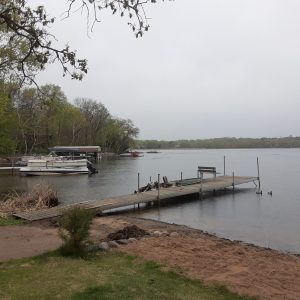Curly-leaf Pondweed Treatment Begins in Plymouth’s Bass Lake
The Single Creek Watershed Management Commission has begun treating curly-leaf pondweed in Plymouth’s Bass Lake. A chemical herbicide will try to stop the invasive species that overtakes habitat and chokes out native aquatic plants.
“Curly-leaf is a very invasive species of aquatic vegetation in lakes,” said Diane Spector from the Shingle Creek Watershed. “It has a curious growth habit in that it grows under the ice in the winter time. It’s one of the first species that emerges in the spring time and it outcompetes the native vegetation and then dies off in the middle of the summer. It release phosphorous into the lakes and makes a contribution towards the algae blooms in the late summer time.”

Alum treatments were applied to Bass Lake in 2019 and that will be repeated in 2020. Experts believe this can stem the curly-leaf invasion and reduce growth and expansion of the weed.
“As a result of the alum treatment, the water becomes very clear,” Spector said. “That encourages the growth of vegetation. We really want the native vegetation to grow and not the curly leaf. If we can knock this back really early in the spring, that gives that native vegetation a chance to grow.”
“Curly-leaf is very aggressive”
Spector says without an aggressive approach to combat curly leaf, the results will be devastating for Bass Lake.
“If we don’t attack this curly leaf it will eventually take over because it’s very aggressive,” Spector said. “Then it will become a hazard to navigation and to the enjoyments of the lake and it will also contribute to the water quality issues on Bass Lake.”
Anyone boating, canoeing or kayaking on Bass Lake should not remove curly leaf from their water craft if they spot it.
“Curly-leaf reproduces in a couple of different ways,” Spector said. “One of the things that happens is if you mechanically remove it or just grab it and try to remove it from the lake you can break it apart. It can grow from those very tiny pieces of vegetation. If you try to mechanically remove it and go somewhere else on the lake and accidentally deposit some of those fragments, you’ll actually spread it. Don’t try to remove it mechanically. Just try to work with it until the chemicals can take effect.”
Bass Lake is 182 acres in size and its deepest spot is an estimated 31 feet.


